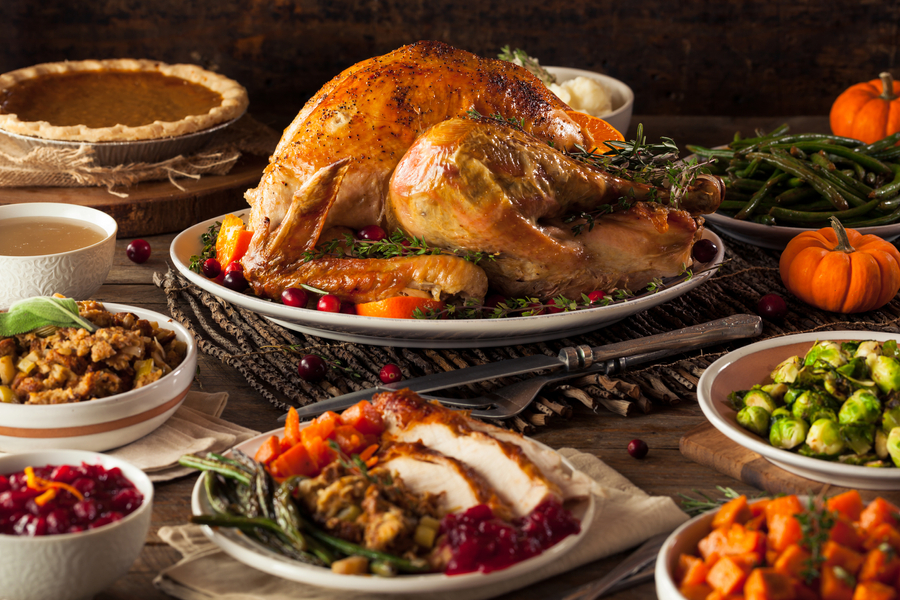-
Contact Us
-
General Inquiries/Service Requests:
- 888.313.6862
-
contactcenter@oncor.com
-
(Mon.-Fri., 8 a.m.-6 p.m. Central Time)
-
For Outages
- 888.313.4747
-
(24/7)
Ever wonder how much energy it takes to consume your annual Thanksgiving meal? We sometimes forget that calories are a measurement unit of energy. So, sometime between the first glint of the carving knife and the last forkful of pie, we wondered: If we weren’t using them to fuel our bodies—say, as we make our way from the table to the couch for our holiday nap—what else could all those calories accomplish?
Energy measurements can be converted from one unit to another. For instance, an amount of energy can be measured in joules or calories or Watts, and the difference is arithmetic—just as when we convert miles to kilometers or pounds to kilograms. This means we can determine, theoretically, determine how a certain number of Thanksgiving calories might translate into power for activities we’re used to measuring with different units of energy, like Watts for a light bulb.
1,000 kilogram calories or “food calories” essentially converts to 1 kilowatt hour (kWh), the standard unit of measurement on your Oncor electric bill. To put that in perspective, if you turn on your electric oven at 350 degrees for an hour, it will use about 2kW of energy. Roasting the Thanksgiving turkey could take up to four hours, or 8kWh.
The average Thanksgiving meal packs a whopping 3,000 – about 3kWh in total. That number of calories could easily power a load of laundry (2.3kWh) or a dishwasher load (2kWh) with oomph to spare, or run an air conditioning unit for an hour (3Kw). When you arrived with the sweet potatoes, were you in such a hurry you left your headlights on in the driveway? Good news: The energy on your dinner plate could also jump-start about 750 cars (.004kWh per jump)!
With enough energy packed into a Thanksgiving meal to power a household appliance, it’s also worth noting how much physical activity those calories could fuel. With 3,000 calories, the average active person could run a marathon (2,600 calories), swim almost 12 miles (2,900 calories), or do five hours of burpees (563 calories per hour)! You were going to do that, right?
While you load up your plate with stuffing and pumpkin pie this Thanksgiving, take a moment to consider how much energy is concentrated in that little (or not-so-little) pile of savory treats. It’s true we’re probably still a few years away from the mashed-potato-powered car or gravy-based air conditioning. But it’s a nice dream—a perfect match for that nap you feel coming on.








